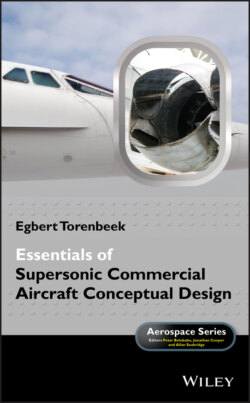Читать книгу Essentials of Supersonic Commercial Aircraft Conceptual Design - Egbert Torenbeek - Страница 14
1.4 US High Speed Research and Development Programs
ОглавлениеDuring the 1970s and 1980s several projects of the American industry were aimed at investigating applications of NASA research of advanced supersonic configurations. Study projects were part of the supersonic cruise aircraft research (SCAR) program, focusing on a second generation of supersonic airliners transporting some 300 passengers over trans‐Pacific routes at speeds up to Mach 2.70. The SCAR Program was brought to an end by the marginal performance and economic potentials that appeared possible with the then available technology base. A resurgence of interest in a second‐generation high‐speed commercial transport (HSCT) occurred during the 1990s in Europe, the USA and Asia. Projections in 1989 for the 1995–2015 period indicated that the market in terms of passenger miles would increase by a factor of six (relative to 1971–1989) in the North‐Mid Pacific and by a factor of seven in the Far East. Based on these projections, a potential market for approximately a thousand HSCT aircraft was foreseen in 1989, well over the minimum needed for a a profitable development program launch. NASA studies concluded that a supersonic transport launched in the early 21st century could be compatible with current airports, use jet fuel, and be within ten to fifteen years' technology reach.
In 1989 NASA and the US industry began investigating the potential of HSCT specifications and required technologies. The original SST of the 1960s was planned for Mach 2.70 but the required titanium structure was too heavy, and the HSCT program of Boeing and McDonnell Douglas converged on a more modest Mach 2.40, 300 seat, 9,270 km range jet A fueled aircraft as a focus for technology development. The challenges facing the HSR program were the extremely restrictive constraints placed on emissions, airfield noise, and operation costs. After approximately five years of research it was concluded that insufficient advancement in technology was available to achieve economic viability and to comply with environmental requirements. In particular an acceptable level of the sonic boom could not be achieved and the program was terminated in 1998.
Figure 1.5 Design study of the European Supersonic Commercial Transport.
